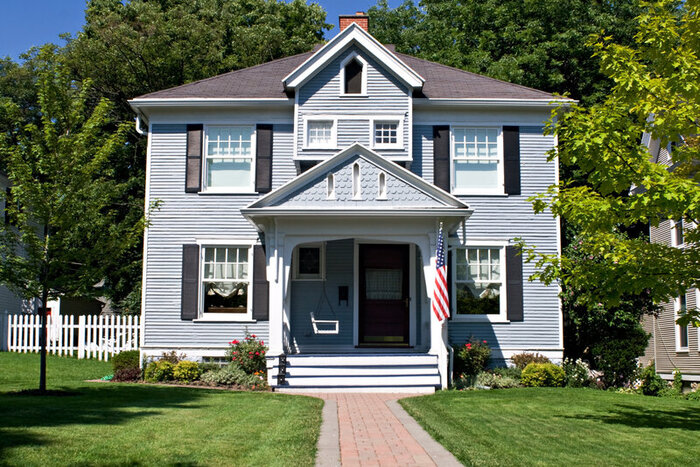
The term “thermal envelope” or a home envelope refers to the structural borders of your home and how they interact or support a trifecta of additional home systems - air sealing, insulation, and ventilation. These parts protect the temperature-controlled interior of the home.
The goal is to keep warm air indoors during the winter and to prevent warm air from penetrating the home during the summer. A healthy home or thermal envelope optimizes energy efficiency while also supporting whole-home comfort and indoor air quality.
As with any system, the entirety is only as strong as its weakest part. So any weakness, malfunction, or inadequacy in your home’s envelope negatively compromises its other components.
There are many ways to describe the makings of a home’s thermal envelope, but we keep it simple and divide it into four separate parts.
A building’s structural envelope consists of the exterior boundaries of the building, much like the paper walls of an envelope you open in the mail. This includes a house’s:
Any cracks in a foundation, holes or leaks in the roof, siding or exterior walls, or inefficient windows and doors negatively impact the home envelope, evidenced by fluctuating temperatures, continuous HVAC use, and moisture control issues.
So, the first step in optimizing the thermal envelope is:
If you’ve recently purchased an older home, or you’re a renter in an inefficient home, some of these repairs may be more costly than you can handle at one time. In that case, work on addressing them one by one. In the meantime, air sealing is the next part of the home envelope - and one that is an easy and affordable DIY task.
The roof must be air and watertight, but the attic space is essential to protecting the home’s thermal envelope. Interior heat gain and loss are primarily due to poorly insulated attics. Insulation is also responsible for controlling the temperature of airflow from crawl spaces.
Adequate insulation:
Scheduling an attic inspection is the best way to determine whether or not your insulation meets current energy efficiency criteria. While we’re there, we’ll also let you know if we feel air sealing or ventilation (see below) requires updating.
There are several signs you need to update or replace insulation. Some of the most telling are:
Leaks in the envelope drastically affect temperature changes as well as humidity levels. Air sealing is the best way to combat leaks. Tubes of caulking and rolls of high-quality weatherstripping are available at your local hardware store.
If cost is an issue for your household, we recommend checking in with your local building or public utility departments. Many communities offer coupons, discounts, or cash-back rebates for energy-efficiency home improvements like air sealing.
Visit energy.gov’s Air Sealing Your Home page for specific instructions, recommendations, and a pictorial guide of where to focus your efforts. In most cases, you’ll scour your home from attic to floor around the exterior envelope. Feel for drafts and look for areas that are obviously leaky or compromised.
In most cases, your efforts will be concentrated around:
Some of the items may not feel safe, such as those located on the roof. In that case, a local roof or attic professional can finish the job for you.
Whole-home ventilation is the final piece of the home envelope equation. A well-sealed home can wind up with humidity issues if a ventilation system isn’t in place. Also, a lack of fresh airflow means your indoor air quality may be worse than the air outdoors.
Recent posts on the EPA website state:
…studies of human exposure to air pollutants indicate that indoor levels of pollutants may be two to five times — and occasionally more than 100 times — higher than outdoor levels.1 These levels of indoor air pollutants are of particular concern because most people spend about 90 percent of their time indoors. For the purposes of this guidance, the definition of good indoor air quality (IAQ) management includes:
All of these are addressed by maintaining your home’s envelope, with special attention on adequate ventilation systems.
Whole home ventilation systems come in many forms, both active and passive. Opening your windows is a simple form. However, most homes benefit from ventilation systems rooted in their HVAC system, which provide air filtration as well as humidity control options.
Do you suspect there are holes or weak spots in your home’s thermal envelope? Schedule an inspection with Attic Solutions. We can identify what - if anything - needs replacement. We’re also happy to provide information and instruction on maintaining your existing home energy systems. If we notice something outside our service area niche, we can refer you to local, licensed, high-quality contractors to get the job done.